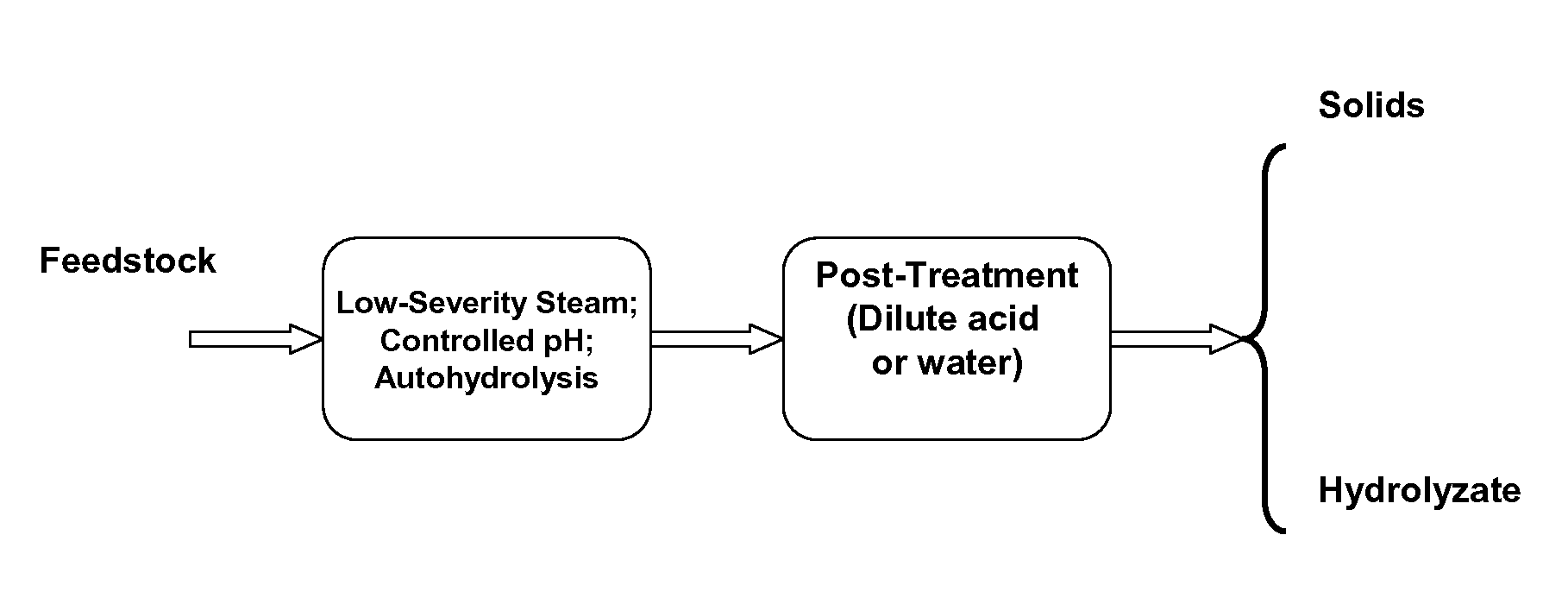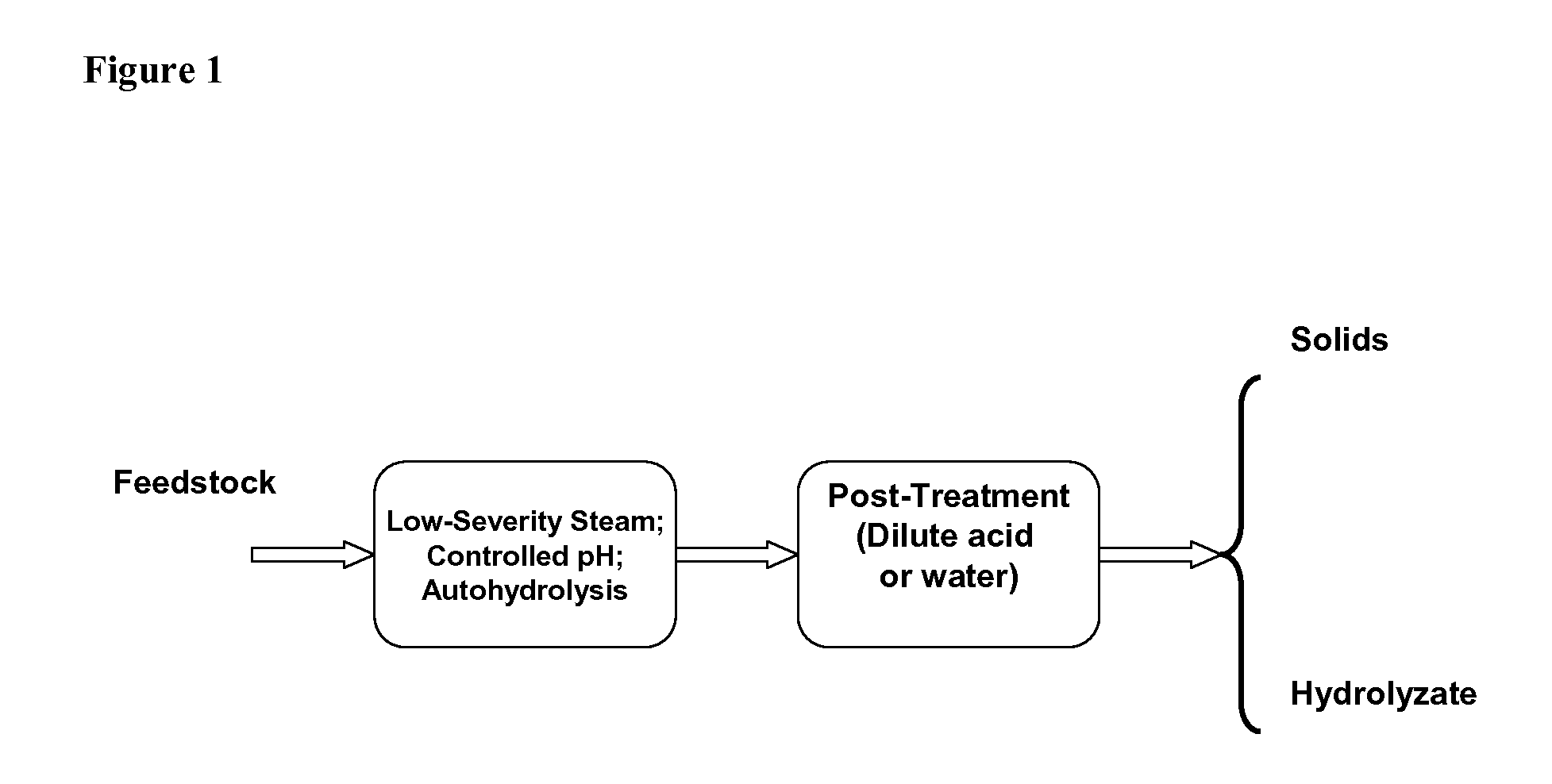Two-Stage Process for Biomass Pretreatment
a biomass pretreatment and two-stage technology, applied in the field of two-stage process for biomass pretreatment, can solve the problems of ineffective steam explosion pretreatment for softwoods, significant fraction of hemicellulose sugars (in some cases more than 25%) may be damaged, and the pretreatment process based solely on dilute acid treatment can be economically prohibitive, so as to improve hemicellulose sugar yield, reduce overall energy costs, and reduce the cost
- Summary
- Abstract
- Description
- Claims
- Application Information
AI Technical Summary
Benefits of technology
Problems solved by technology
Method used
Image
Examples
Embodiment Construction
Overview
[0018]In certain embodiments, low-severity steam treatment is first applied to hemicellulosic biomass to break down gently hemicellulose and lignin, producing an intermediate substrate that is more accessible to acid for hemicellulose hydrolysis and lignin solubilization. In certain embodiments, autohydrolysis is first employed in order to gently break down the hemicellulose and lignin found in hemicellulosic biomass, producing an intermediate substrate that is more accessible to acid for hemicellulose hydrolysis and lignin solubilization. In some embodiments, the material may be further refined after low-severity steam treatment or autohydrolysis to reduce the particle size. In certain other embodiments, the material may be washed after low-severity steam treatment or autohydrolysis to reduce the concentrations of enzymatic inhibitors or inhibitors of microorganisms that may be solubilized or produced during the treatment.
[0019]In certain embodiments, complete hemicellulose...
PUM
| Property | Measurement | Unit |
|---|---|---|
| glass transition temperature | aaaaa | aaaaa |
| temperature | aaaaa | aaaaa |
| temperatures | aaaaa | aaaaa |
Abstract
Description
Claims
Application Information
 Login to View More
Login to View More - R&D
- Intellectual Property
- Life Sciences
- Materials
- Tech Scout
- Unparalleled Data Quality
- Higher Quality Content
- 60% Fewer Hallucinations
Browse by: Latest US Patents, China's latest patents, Technical Efficacy Thesaurus, Application Domain, Technology Topic, Popular Technical Reports.
© 2025 PatSnap. All rights reserved.Legal|Privacy policy|Modern Slavery Act Transparency Statement|Sitemap|About US| Contact US: help@patsnap.com



